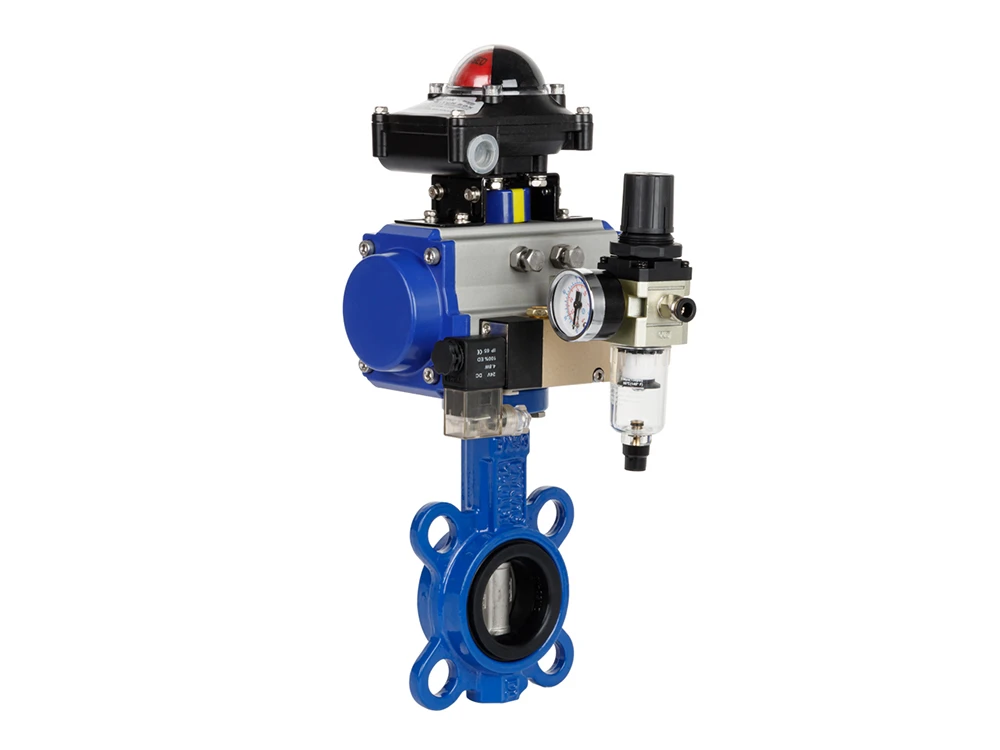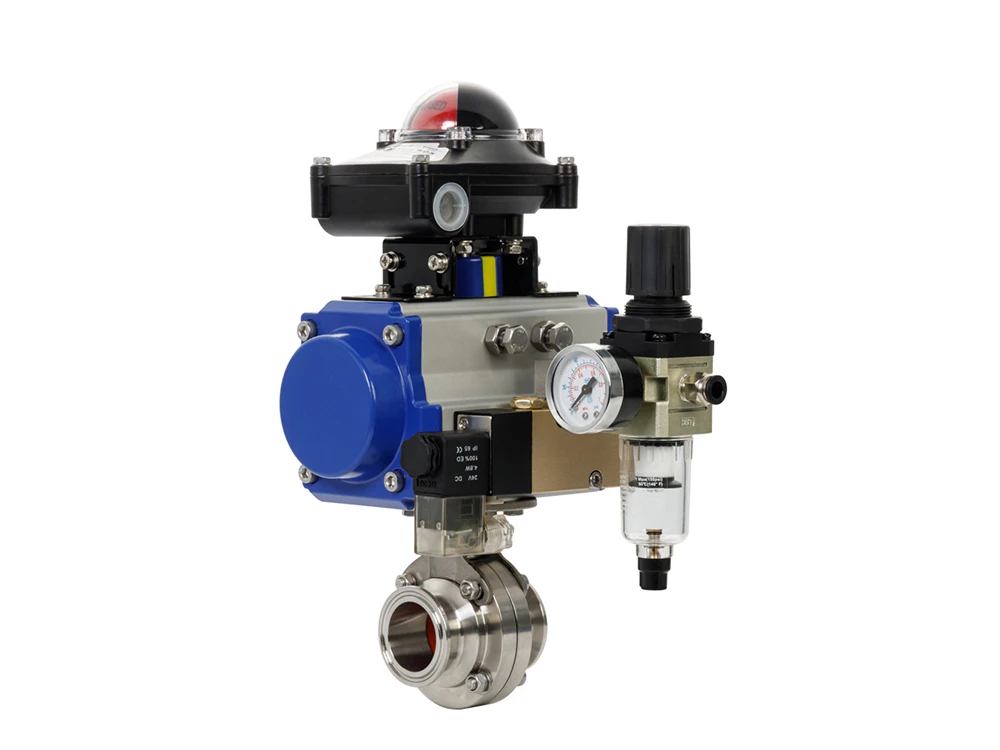What Is Valve Trim? Plug Profiles, Parts, Chart, and Selection Process
Valve trim pertains to the operational components of a valve which are typically in contact with the process fluid. Within this piece, you’ll gain a deeper understanding of the significance of valve trim, peruse a valve trim chart, get acquainted with the material selection procedures, and observe the selection process in practice by contrasting two prevalent trims: trim 5 and trim 8.
What is Valve Trim?
The trim, especially the mating components that adjust the flow to the controller’s requirements, lies at the core of the control valve. Every process is unique, thereby demanding specific flow control characteristics. Valve trim encompasses the stem, plug, disc, seating surface, etc. It also represents the actual form of the plug and seat configuration. The shape of the valve plug dictates the flow characteristics of the valve.
Characteristics of Valve Trim Plug
Molding the valve trim alters the operational attributes of the valve. For instance, the plug profiles of a stem-guided globe valve can be designed to be either quick-opening, linear, or equal-percentage.
Quick Open
A quick-opening valve plug leads to a substantial augmentation in flow with a slight initial variation in stem travel. Consequently, a relatively small proportion of stem lift attains nearly the maximum flow. Quick-open plugs are capable of promptly generating full flow for on-off operations.
Linear
Irrespective of the plug position, the linear profile provides incrementally equal alterations in flow for each unit of valve stroke. Linear plugs are employed in systems where the valve pressure drop constitutes a considerable portion of the overall system pressure drop.
Equal Percentage
The equal percentage valve plug brings about the precise percentage change in flow for every fixed increment of valve stroke at any location along its characteristic curve. This kind of valve trim is commonly utilized in high-specification applications.
The flow characteristic curve of the valve illustrates the connection between the valve stem position and the flow rate passing through a control valve. The curve maps out the percentage of the valve opening against the maximum flow coefficient (CV). This is determined by observing the flow rate at multiple points along the valve’s passage while keeping a constant differential pressure across the valve. A modified version of the generalized Control Valve CV equation is used to calculate the CV value at each valve position.
Parts of Valve Trim
A lathe machine typically fabricates the components of the valve trim. These parts consist of the back seat, glands, spacers, guides, bushings, retention pins, and internal springs.
Disc
A disc serves as the fundamental component of valve trim. It is the part that, based on its position, either allows, regulates, or halts the flow of fluid. The name of the valve usually stems from the type of disc. For instance, gate valves, ball valves, plug valves, and needle valves all possess discs that are shaped by their respective names.
A valve disc can be produced through forging, casting, or other manufacturing methods. Sometimes, the sealing face of the valve disc is hardened to enhance its resistance to wear. Since the disc needs to have a smooth machined surface to minimize friction with the seat, it is a component that plays a crucial role in maintaining pressure.
When in the closed position, a disc lies against the stationary valve seat. The stem can be moved either through manual operation or automated actuation.
Seat
The seat offers a location for the disc to rest upon and form a seal. A valve might possess more than one seat. There is just a single seat on a globe valve and a swing-check valve. In contrast, a gate valve and a ball valve each have two seats, with one located upstream and the other downstream.
The effectiveness of the seal between the valve disc and seat is directly related to the seat leakage rate. Valve seats can be either permanent or removable rings. The seats on valves are frequently screwed, welded, or integrally cast or forged, and they are strengthened through heat – treatment or hard-facing.
To achieve the best possible sealing, the seating area needs to have a smooth surface polish. In non-critical applications, non-metallic seats were adopted in certain ball valves and plug valves. Valve manufacturers create a variety of styles of combination valve seats that combine elastomer and metal seats to obtain the necessary leak tightness that metal seats by themselves are unable to accomplish.
Back Seat
The back seat consists of a shoulder on the stem and a corresponding mating surface on the underside of the bonnet. When the stem is fully opened, it creates a seal. This seal prevents the media from leaking into the packing chamber and then into the surrounding environment. It should be noted that, for safety considerations, it is NEVER advisable to change the packing while the valve is under pressure.
Stem
The stem serves as the connection between the handwheel/actuator and the disc. The movement of the valve disc is determined by the movement of the stem. The valve stem imparts the necessary motion to the disc, plug, or ball for opening, closing, or adjusting the valve. It connects the valve’s actuator, handwheel, or lever at one end and the disc at the other.
In gate and globe valves, the linear motion of the disc is what opens or closes the valve. However, in plug, ball, and butterfly valves, the disc rotates to open or close the valve. Stems are usually made of stainless steel and are commonly attached to the disc through connections or other mechanical methods.
Chart of Valve Trim
Trim materials like discs, seats, stems, back sheets, and sleeves are grouped and given a single number, known as the trim number or combination number. This number determines the material grade of each component.
This system, which is offered by API, encompasses a range from 1 to 18.
| API Trim No. | Material | Seat | Disc | Backseat | Stem | Notes |
| 1 | 410 | 410 | 410 | 410 | 410 | |
| 2 | 304 | 304 | 304 | 304 | 304 | |
| 3 | F310 | 310 | 310 | 310 | 310 | |
| 4 | Hard 410 | Hard 410 | 410 | 410 | 410 | Seas 750 BHN min. |
| 5 | Hard faced | Stellite | Stellite | 410 | 410 | |
| 5A | Hard faced | Ni-Cr | Ni-Cr | 410 | 410 | |
| 6 | 410 and Cu-Ni | Cu-Ni | Cu-Ni | 410 | 410 | |
| 7 | 410 and Hard 410 | Hard 410 | Hard 410 | 410 | 410 | Seas 750 BHN min. |
| 8 | 410 and Hardfaced | Stellite | 410 | 410 | 410 | |
| 8A | 410 and Hardfaced | Ni-Cr | 410 | 410 | 410 | |
| 9 | Monel | Monel | Monel | Monel | Monel | |
| 10 | 316 | 316 | 316 | 316 | 316 | |
| 11 | Monel and Hardfaced | Stellite | Monel | Monel | Monel | |
| 12 | 316 and Hardfaced | Stellite | 316 | 316 | 316 | |
| 13 | Alloy 20 | Alloy 20 | Alloy 20 | Alloy 20 | Alloy 20 | |
| 14 | Alloy 20 and Hardfaced | Stellite | Alloy 20 | Alloy 20 | Alloy 20 | |
| 15 | 304 and Hardfaced | Stellite | Stellite | 304 | 304 | |
| 16 | 316 and Hardfaced | Stellite | Stellite | 316 | 316 | |
| 17 | 347 and Hardfaced | Stellite | Stellite | 347 | 347 | |
| 18 | Alloy 20 and Hardfaced | Stellite | Stellite | Alloy 20 | Alloy 20 |
Materials of Trim (1 through 18)
Process of Material Selection
Grasping the process of material selection is of utmost significance for engineering any application and/or part design. The construction of all valve applications is based on the groundwork of material selection.
Selection of Trim Material
Stainless steel is the most cost-effective trim material. Present in diverse grades, it offers robust resistance against erosive, corrosive, and temperature effects and serves as an outstanding comprehensive option.
Besides stainless steel, pricier materials like Monel, Alloy 20, and Cu-Ni could be chosen. These materials, which are occasionally called exotic materials, typically cost more and have lengthier lead times in comparison to stainless steel.
The guidelines of manufacturers ought to be adhered to for trim selection. One has to take into account the trade-offs between the initial cost and the projected service life. For example, it might be an unwise choice to pick Stellite trim if it prolongs the valve’s service life by 20% yet doubles the price. It is crucial to consider reliability, downtime, and labor costs.
Applications engineers ought not to attempt to correlate operating pressures with anticipated wear.
Hardened Trim
Hardened trim is suitable for the majority of high-pressure applications. While solid hard plugs prove to be more economical for valves with a diameter below 1 inch, a hard material overlay is more cost-efficient for larger sizes. These overlays perform effectively in services such as superheated steam, two-phase flow, and high temperatures exceeding 600°F (315°C).
Criterion Example for Trim Selection
Typically, several leading contenders surface during the trim material selection process. For instance, Trim 5 and Trim 8 are two comparable trims that might be pitted against one another. To establish which one is the optimal option, contrast the characteristics of each trim number.
| Details | Trim No. 5 | Trim No. 8 |
| Nominal Trim | 410 – Full Hard faced | 410 and Ni-Cu |
| Trim Code | F6HF | F6HFS |
| Stem and other trim parts | 410 (13Cr) (200-275 HBN) | 410 (13Cr) (200-275 HBN) |
| Disc/Wedge | F6+St Gr6 (CoCr Alloy) (350 HBN min) | Monel 400® (NiCu Alloy) (250 HBN min) |
| Seat Surface | 410+St Gr6 (CoCr Alloy) (350 HBN min) | Monel 400® (NiCu Alloy) (175 HBN min) |
| Trim Material Grade | 13Cr-0.5Ni-1Mn/Co-Cr-A | 13Cr-0.5Ni-1Mn/Ni-Cu |
Trim number 5 offers robust performance in high-pressure, mildly erosive, and corrosive environments within the temperature range of -265°C to 650°C. It is highly suitable for high-pressure water and steam applications. Trim number 8 affords a long service life up to 593°C. It is appropriate for moderate pressure applications and corrosive circumstances. Generally, trim 5 is regarded as preferable on account of its higher level of hardening.
In this particular instance, ascertaining whether trim 5 or trim 8 is the most suitable option hinges not only on comprehending the service conditions but also involves an assessment of product availability and the computation of both the initial capital outlay and anticipated service life. This principle applies to all valve trims and every service condition.





